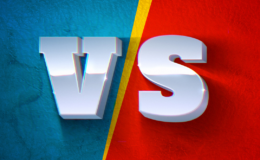In business, assets apply to everything a company owns. There are two types of assets: tangible assets and intangible assets. Tangible assets include physical items like cash, inventory, vehicles, equipment, buildings, and investments. Intangible assets do not have a physical form, and they include accounts receivable, prepaid expenses, and patents.
Tangible vs. Intangible Assets
Tangible Assets:
Tangible assets will make up the bulk of the company’s assets because they usually provide the equipment that the business uses to produce goods and services. These assets can be damaged or stolen. As well, since tangible assets can include physical machinery or tools, they will occasionally need to be serviced or replaced.
Inside tangible assets, there are two types as well. There are current assets and fixed assets. Current assets include cash, inventory, and marketable securities. They are considered current assets because they are used within a year and can be sold quickly to raise money if necessary. Fixed assets tend to stay in the business for longer than a year, and they are usually needed to run the business continually.
Intangible Assets:
Intangible assets are nonphysical assets that add to a company’s value or worth over time. These assets can be far more valuable than tangible assets, but they can be harder to value on a balance sheet. Some intangible assets will have an initial purchase price, such as a patent or license. However, others don’t. This cost can be spread out over years as the asset generates value. Intangible assets can include domain names, performance events, service contracts, blueprints, manuscripts, and even trade secrets.
Assets are an integral part of business, and assets are everything a company owns: including both tangible assets and intangible assets. Tangible assets tend to include anything that makes a business run that is a physical item, such as machinery, vehicles, inventory, and on-hand cash. On the other hand, intangible assets do not have a physical form, and they usually include intellectual property, including patents, manuscripts, and even goodwill. Ultimately both tangible and intangible assets together form the backbone of a company’s strength and worth, each contributing distinctively to its prosperity.






